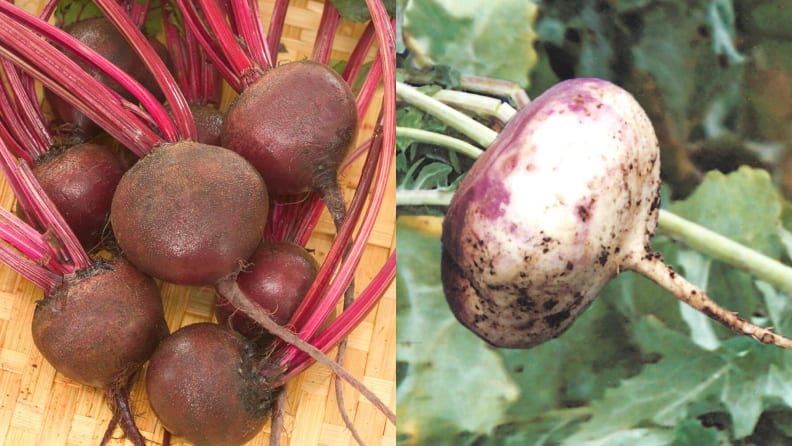It’s not too late to start a garden—here’s how to see results fast
These herbs and vegetables can grow in as little as 30 days.
Products are chosen independently by our editors. Purchases made through our links may earn us a commission.
So, it’s mid-July, you're still stuck at home, and you’re just now deciding you want to plant a garden—the good news is that it’s not too late! Here’s a list of delicious veggies and savory herbs that don’t mind a late-summer start.
How much time do you have left?
Whether you can grow anything edible depends on how long you have until the first frost of the season, if you have frost at all where you live. In hot areas, the growing season is also limited by days when daily temperatures max out at 90°F. For example, in Tuscon, Arizona, the first frost is around Nov. 29, but the first time you can plant fall crops is around Aug. 15, when the summer has started to cool.
If you live in the north, your plants will also be limited by the shorter days. Seattle string beans lose two hours of daily light between Sept. 1 and Oct. 1 (and that’s not even counting rainy days), while Tucson’s chiles lose less than an hour. That lost sunlight makes it harder for high-energy veggies like tomatoes and melons to mature and ripen before frost, while leafy greens and other non-fruiting vegetables can produce a full crop.
Some veggies are “cold-hardy.” They don’t wither and die with mild frosts (at or just below 32°F), and some of them even improve after frost; kale and collards are supposed to get sweeter. In general, leafy greens and cabbages can withstand a light frost, while lettuces give up the ghost. Root vegetables like beets, carrots, parsnips, and potatoes can stay in the ground after frost—but make sure you dig them before the ground freezes solid.
To figure out how much time you have, find your local first frost date. Then, count the days until then, and start planting! Most seed packets will list “time to maturity” on the back of the packet. If you live in the low-light north, add a few days to the time listed in the fall, as your plants will be getting less sunlight per day than their Southern brethren.
If you have 30 days...
The quickest crops you can grow in your garden are radishes and mustard greens, which get big enough to eat in as little as 30 days (though they’ll grow bigger if you leave them in the soil longer). Mustard greens can survive a light frost, and you can keep digging radishes until the soil freezes. Basil will produce leaves in 30 days, but not very many—just enough to provide a salad sprinkle or tomato topping, not a batch of pesto.
If you have 45 days...
If you have a month-and-a-half of growing season left, you’re in hardy green territory. Spinach, kale, lettuce, collard greens, and Swiss chard are all on the table. The greens may not grow as big as if you had planted them earlier, but they can all be harvested after frost (except for lettuce, which will collapse into a puddle at the first sign of winter).
If you have 60 days...

It's possible to grow both beets and turnips if you're 60 days out from the first frost.
You can now grow more vegetables that aren’t all leaves! Beets, broccoli, bush beans, some cabbages, cauliflower, some cucumbers, green onions, kohlrabi, turnips (and turnip greens), summer squash, and zucchini are all feasible.
Be warned that the cucumbers, zucchini, squash, and bush beans may not produce well if they do not get enough light during the day. If your yard or deck gets a lot shadier during the fall as the days get shorter and the sun stays low on the horizon longer, you may want to stick to greens and root vegetables.
Cilantro (coriander seeds) will grow bushy in 60 days, and if the weather is cool, it’s less likely to bolt—that is, to go to seed and stop producing leaves.
Make sure you check the “days to maturity” on the seed packet label. Some varieties of these vegetables take more than 80 days to get to harvest size. Vegetable varieties with words like “early” and “frost” in their names are a good bet.
If you have 75 days...
With more than two months to first frost, you can add carrots to the mix, along with snap peas, which have crunchy edible pods; or shell peas, which tend to have tough, stringy pods. If your weather will stay warm during the day, you can try cherry tomatoes as well—but tomatoes really need light and warmth to produce well.
If you have more than 75 days…
Congratulations! Either it’s spring or you live in a temperate area like coastal California. You can grow any vegetable you want. How about growing some artichokes?


